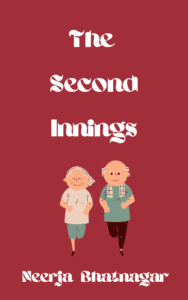
As a writer, I often find myself lost in a world of words, weaving stories and creating characters that dance across the pages. However, stepping into a perfume shop presents a different kind of challenge altogether. The dazzling array of bottles, each promising a unique fragrance experience, can be overwhelmingly confusing. The scents blend into a bewildering symphony, making it hard to discern which one truly captures the essence I’m seeking. Determined to navigate this fragrant maze, I decided to delve into the world of perfumes, studying the different types and their olfactory compositions. Now, armed with this newfound knowledge, I’m excited to share with you the secrets of selecting the perfect perfume.
Types, Fragrance Notes, and Categories
Perfumes are more than just pleasant scents; they are an expression of our personality and style. Understanding the different types and categories of perfume fragrances can help us find the perfect scent that suits our preferences and makes us feel confident. In this complete guide, we will explore the various types of perfume fragrances, navigate fragrance notes, and discover the categories of perfumes based on concentration. Whether you’re a perfume enthusiast or a beginner, this guide will provide valuable insights to help you choose the right fragrance for any occasion.
Understanding Perfume Fragrance Types
Before diving into the types of perfumes, it’s important to understand perfume fragrance types to help you select scents that align with your preferences and personality. Perfumes are typically categorized into several fragrance families based on their predominant scent notes and characteristics. Here are some common fragrance types:
1. Floral Fragrances
– Capture the essence of various flowers, such as roses, lilies, and jasmine.
– Feminine, romantic, and evoke a sense of elegance.
2. Fruity Fragrances
– Embody freshness and vitality with notes of ripe berries, citrus, and tropical fruits.
– Invigorating and joyful, reminiscent of sun-kissed orchards.
3. Oriental Fragrances
– Blend spices, woods, and resins, creating an aura of mystique and sensuality.
– Rich notes like vanilla, oud, and amber intertwined with exotic florals.
4. Woody Fragrances
– Evoke the essence of forests with warm, earthy tones of cedar, sandalwood, and vetiver.
– Sophisticated, masculine, and reminiscent of nature’s tranquillity.
5. **Aquatic Fragrances**
– Capture the essence of oceanic serenity with notes of sea salt, marine breeze, and driftwood.
– Crisp, refreshing, and embody the timeless allure of the sea.
6. Gourmand Fragrances
– Tantalize the senses with notes of vanilla, caramel, chocolate, and spices.
– Evoke indulgent sensations and are reminiscent of culinary delights.
7. Citrus Fragrances
– Vibrant and refreshing, with notes of lemon, orange, and grapefruit.
– Offer a burst of energy and brightness, evoking memories of summer days.
8. Fougère Fragrances
– Characterized by a harmonious blend of lavender, oakmoss, and coumarin.
– Sophisticated, fresh, and exude a sense of refinement and masculinity.
9. Leather Fragrances
– Blend smoky notes of tanned hides with hints of spice and wood.
– Bold, timeless, and capture the essence of luxury and adventure.
Categories of Perfumes
Perfumes are categorized based on their concentration of aromatic compounds, which determines their strength and longevity. Here are the main categories:
1. Parfum (or Extrait de Parfum)
– Highest concentration of aromatic compounds (15% to 40%).
– Long-lasting scent, often more than 8 hours.
– Most expensive due to high concentration.
2. Eau de Parfum (EDP)
– Concentration of 15% to 20%.
– Long-lasting fragrance (4 to 8 hours).
– Balance between potency and affordability.
3. Eau de Toilette (EDT)
– Lower concentration (5% to 15%).
– Lighter fragrance, lasting 2 to 4 hours.
– More affordable than EDP, popular for daily wear.
4. Eau de Cologne (EDC)
– Lowest concentration (2% to 4%).
– Fresh and invigorating scent, lasting around 2 hours.
– Used as a body splash or for a quick refreshing boost.
5. Eau Fraîche
– Similar to EDC but with an even lower concentration of aromatic compounds.
– Lightest scent, lasting less than 2 hours.
– Suitable for a quick, subtle fragrance boost.
Navigating Fragrance Notes
Understanding fragrance notes is crucial when selecting a perfume. Fragrance notes are the different scents that emerge as the perfume dries down on the skin. Here are the three main categories of fragrance notes:
1. Top Notes
– Initial scents upon applying a perfume.
– Light and volatile, evaporate quickly.
– Common notes: citrus fruits, herbs, and aromatic spices.
– Fade within the first few minutes.
2. Middle Notes (Heart Notes)
– Emerge once the top notes have evaporated.
– Establish the perfume’s character.
– Common notes: floral, fruity, or spicy scents.
– Last longer than top notes but eventually give way to base notes.
3. Base Notes
– Foundation of a perfume, emerging after middle notes fade.
– Deep, rich, and long-lasting scents.
– Common notes: woody, musky, or oriental ingredients.
– Provide the perfume with its lasting power and overall complexity.
Quick Guide
– Parfum – 20-40% concentration, 12+ hours lasting power.
– Eau de Parfum – 15-20% concentration, 8+ hours lasting power.
– Eau de Toilette – 5-15% concentration, 4-7 hours lasting power.
– Eau de Cologne – 2-4% concentration, 2-3 hours lasting power.
– Eau Fraîche – 1-3% concentration, 2 hours lasting power.
– Perfume Oil – 10-20% concentration, 8 hours lasting power.
Understanding Perfume Strengths
The strength of a perfume refers to the concentration of fragrance oils. Higher concentrations mean more pure fragrance, less alcohol, greater cost, and longer-lasting power.
– Parfum: Highest concentration, lasts up to 24 hours, recommended for sensitive skin.
– Eau de Parfum: Next highest, lasts 6-8 hours, also recommended for sensitive skin.
– Eau de Toilette: Lower concentration, lasts 2-4 hours, popular for daily wear.
– Eau de Cologne: Lightest concentration, lasts up to 2 hours, often needs reapplication.
– Eau Fraîche: Most diluted, lasts less than 2 hours, often used to freshen up.
– Perfume Oils: Pure oil base, no alcohol, lasting up to 8 hours, applied directly to the skin.
Understanding the different perfume types and strengths helps you choose the perfect scent. Each perfume type offers a unique olfactory experience, and knowing how to layer scents can personalize your fragrance. Enhance your scent collection with these insights, and discover favourites among various fragrance families for any occasion.
Explore some of the latest releases for men and women, and enjoy the journey of finding your perfect scent.
Neerja Bhatnagar
Feel free to connect with me on social media if you’d like to stay updated on more content like this!
Instagram | Facebook | YouTube |Twitter |Podcast |
I have written 3 solo books and 3 anthologies. You can buy my books on Amazon. If you are on Kindle Unlimited, you can read them for free. Pls, do check and share your reviews.



